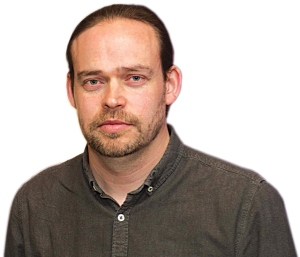James Haddrell speaks on the practical challenges of theatre production
One of the joys of working at Greenwich Theatre is that no year ever looks the same as the one before – we are all learning, all the time, whether it’s the technical team, marketing, box office or me in programming or directing.

In recent years we have increased the number of in-house productions that take place here, so we have had to shift our working model to handle that, and to solve a host of practical challenges – how do you make it rain on stage (for Abortive by Caryl Churchill), how do you add circus or magic to a straight drama written for just two actors (for An Intervention by Mike Bartlett), how do you design a single set to accommodate a large manor house, a dingy basement and a modern East London flat (for our Pinter double-bill, and the forthcoming Vincent River by Philip Ridley).
We also occupy an important position in the national theatre ecology, providing a space for emerging artists to try out new work before moving on to bigger spaces – so we’ve had to learn how to juggle programming a small studio and a main auditorium at the same time, how to accommodate the ever-changing needs of new artists, and how to help them learn here and then move on.
The pandemic taught us a lot about reaching out to audiences who can’t attend a show, but also about just how fragile a freelance career in this industry can be, so we have learnt to work with creatives at the earliest stages of their
careers to strengthen their footing as they embark on their journey and give them the best chance of staying in this industry.
For the Pinter double-bill (just finished) and Vincent River (coming soon) we have worked with early career creative teams – designer Alice Carroll’s set for the Pinters was described by critics as “fantastic”, while Matt Keywood’s lighting design was hailed as “spine-chilling”.
Both will take those accolades with them as they strive to carve out a name for themselves in theatre design.
Even the annual pantomime, which marks a recurring treat for so many members of our audience, has gone through its own evolution with changes taking place year on year and new challenges to meet.
Most recently, for the past two years we moved our band out of the orchestra pit and onto the stage, so that they could play a fuller role in the show, and last year we handed writing duties on to regular villain Anthony Spargo for his debut pantomime script – Robin Hood.
This year, Anthony once again takes the reins as writer and returns as villain, this time taking on the story of Snow White – which will bring its own list of things for us to learn.
I have just finished reading the first draft of the script, which is a fantastic comic retelling of the story.
The familiar elements will be there – the wicked queen (played by Anthony), the poisoned apple, the seven dwarfs and the Prince, but there are some major surprises.
I’m not going to give the game away but, needless to say, when audiences come to the show there will be some show stopping moments unlike anything we’ve ever done before.
Picture: Anthony Spargo in Robin Hood last year Picture: Lidia Crisafulli
